Featured.
-
9 Cool Things Our Clients Did
Meaningful work with people we love – our mantra since Emerson opened its doors in 2001. Last year was no different. Here’s a recap.They tackled AI, onboarding, streamlining, CRM, and leadership.
We got to work on some epic stuff in 2022. Here’s what a few of our clients invested in last year.

A global professional services firm helped employees get up to speed on Artificial Intelligence.
To create the new Artificial Intelligence Academy, we built learner personas, illustrating the technical and professional skills they will need to help clients understand AI solutions. Then we partnered with a technical training firm to script, design, and develop a simulation so learners can practice their new skills in an AI project scenario.

A national water solutions company onboarded over 500 new team members, doubling in size.
HR and functional teams built a program to welcome, train, and motivate their new team members. Onboarding involved 40 trainers, 118 classes/modules, 1007 learners, and 11,396 hours of training. We also jump-started a formal leadership development program for all people-leaders in the business.

A global retail client boosted their organizational change management capability.
They launched a new Organizational Change Management (OCM) office to handle the increase in transformation projects impacting employees. We helped the new OCM team align on a custom change management methodology. We also built tools, templates, and a digital playbook on SharePoint to help project managers and change leads execute the methodology consistently.

An international business upped revenue by cross-selling existing digital assets.
Our client wanted more of their international customer base to buy and use their digital products. Subject matter experts for 20 existing high-impact digital assets helped us create short, self-guided, virtual, interactive learning programs for the firm’s practitioners. Each program teaches the “who, what, when, where, and why” for all 20 assets. The training boosted confidence and instilled new behaviors to lead client sales conversations.

A global retailer streamlined their contract labor supplier pool to reduce complexity and risk.
We helped hiring managers make the business process and technology changes feel “familiar, controlled, and successful.” We aligned the future-state processes with what was familiar to them and presented the “what’s in it for me” for the new tool. We created roadmaps for stakeholders, providing visibility and individual control as the changes rolled out.

A global professional services company invested in critical skills.
They targeted skills to improve innovation, decision-making, and collaboration. We helped design, develop, and deliver the program, which uses bio-psycho-social practice to boost critical thinking, empathy, communication, and resilience.

Three clients improved the customer experience with Customer Relationship Management (CRM).
We helped these three companies by shining a light on the people side of their CRM implementations. Specifically, we helped employees understand how their jobs would change and how to “survive” the transition to a new CRM. We analyzed the impacts on them, engaged the workforce, prepared them for go-live, and built internal change capability for the long term.

A U.S. DOE Office of Science national laboratory built behaviors that drive change.
We helped the lab identify the key employee behaviors that would foster positive change: collaboration, role clarity, and proactive leadership. We then created ways to focus stakeholder attention on the right behaviors and provide coaching to leaders.

A well-known brand turned their people leaders into consultants.
They acknowledged that their own managers were operating as consultants to their internal and external customers, solving problems and influencing change every day. We curated the licensed content from Peter Block’s Flawless Consulting book, then designed and built custom learning for a global audience. This client now sees management through the lens of a consultant, who is “flawless” when they are being direct and authentic with their customers.
-
Is It Common, Critical, or Catastrophic
Emerson's L&D Manager reflects on a recent move and enterprise learning. She learned everything can’t—and shouldn’t—be crammed into a learning event…nor a Honda AccordWhat moving to a new house can teach us about enterprise learning
Sometimes the last bit of something is great. You know how those yellow ice cream cones have a little grid in the bottom that gets filled with ice cream? That last part is magic — the perfect balance of ice cream and cone. Also great: the last part of a story, giving us the satisfying closure we need.
And then there is packing to move, where the last ten percent can feel like 110 percent. You think you’re nearly done, but the last few tasks keep dragging on.
It. Just. Won’t. End.
At the end of August, I moved to a new place; it was, in fact, that last ten percent that challenged me the most.
I drive a Honda Accord, which can only hold so much. It had to carry me, a large dog, snacks for me and the large dog, many plants, and a few other necessities. Then I realized it had to hold things that didn’t make it into the moving truck. I tried shipping a couple boxes; I made use of every spare nook in the car. Then I came to terms with the fact that some things just weren’t meant to go.
It occurs to me that this also happens when organizations are planning a learning experience for their teams. So often it is a big event— rare, much anticipated, and needs to fit “everything” in. Or so we think.
Do we really need to train on everything?
At Emerson we rely on 3 Cs to help us make those tricky calls. Is it: Common, Critical, or Catastrophic?
What does this mean?
- Common: Is it something that is fundamental to daily work? Is it something a lot of folks need to know or do?
- Critical: If nothing else happens, what must get covered? What is absolutely necessary?
- Catastrophic: Is the risk high? If someone doesn’t do this correctly could there be a significant negative effect on the function, business, or our customers?
It is important to recognize that everything can’t—and shouldn’t—be crammed into a learning event. When we find ourselves making use of every last bit of the time set aside for learning, it’s a sign to pause and ask, “What really needs to fit in?” There has to be breathing room. There has to be room for dialogue, application, and actually digesting the experience.
I’m pledging to adopt Common, Critical, and Catastrophic for any future moves. Is it common—do I rely on it for my day-to-day life? (My dishes) Is it critical—a must have or something worth the cost to move? (My big couch) Is it catastrophic—fragile, perishable, or irreplaceable? (My dog!)
If the answer is yes, it is worth keeping.
-
Comparisons: Your Leadership Superpower
People unconsciously compare. As a leader, ask yourself: What comparisons are they making? If you know that, you can influence behavior.You’re judging me. As you read, you’re evaluating whether what I say is true or false. You’re deciding whether I’m credible. You’re gauging my words against your experience to determine whether or not my advice will work for you.
Your people do the same to you. They judge every word you say and write, and every action you take. It’s constant and unconscious, and it’s hard-coded in their DNA to keep them safe.
And what’s behind it—the comparison—is a leadership superpower, if you know how to use it.
People constantly, actively, and unconsciously compare.
They compare your price to what you charged before, and to what they can get elsewhere. They compare their raise to what they read on Glassdoor. They compare your presentation to what they heard on the grapevine.
These comparative judgements affect behavior. People buy, join, quit, collaborate, adopt, undermine, and make deals based on those comparisons.
As you lead, ask yourself: What are they comparing this to? If you know the answer to that, you can create trust and influence behavior.
Here’s why.
Comparisons help us gauge safety.

Scary or sweet?
What’s your reaction to the picture above?
If you have been bitten by a dog, this picture is upsetting. If you love dogs, you might find the picture endearing, knowing that “mouthing” is a sign of attachment. You have compared this picture to your experience and responded based on that.
At Emerson Human Capital, we see it in business as well.
Research shows that the most successful source of new hires is referral. Why? Because the employer compares the candidate to the trusted employee. The candidate compares the company to their friend’s stories. Both the company and the candidate feel safer moving forward.
This is also true for sales. Sales people often look for referrals or “warm leads”—an introduction by a friend. They know that the buyer will assume their experience with the friend will be similar. That makes the sales conversation safe and increases the chances of succeeding.
If you want your team to feel safe, learn what they might be comparing against from their experience, and make sure it’s safe.
Comparisons determine value.
Let’s say you want to buy an airline ticket for your next vacation. You might find a United flight for $1,240. Then you check American. They have flights, but they require layovers. You go back to Google Flights and suddenly see the rates across all the airlines have gone up to $3,950. Now, the original price feels like a bargain. The $1,240 price didn’t change—what changed is the price you’re comparing against.
Reed Hasting, Co-CEO, employed this comparison strategy when he described Netflix’ performance on the July 19, 2022 earnings call.
“Looking at the quarter…we’re executing really well on the content side…we’re talking about losing 1 million instead of losing 2 million.”
Most people want to associate their initiative with something that’s good, to make it feel safe. However, negative comparisons are powerful when you need people to act.
For example, my parents had a beautiful RV they wanted to sell. The dealer so loved it, he kept it at the lot entrance to impress people as they arrived. The camper sat there for over a year. Finally, we asked him if he had another vehicle that was less appealing. He did. So we asked him to park our RV next to it, and price ours slightly lower. The camper sold within three days.
A value comparison is about changing the conversation.
It’s about taking a person from one reference point to another. Academics call this reframing. If you want your people to see value in what you’re doing, compare against something that shows value.
Comparisons help us learn new information.
When we learn something new, we compare it to what we already know. That helps us retain and recall information. When we don’t have a good comparison, we have to create a new category in our mind, which makes information much harder to learn.
Let’s say you plan to visit our office in a month. I tell you the office door code is 3120, but you cannot write it down. You may or may not remember that number. But, if I tell you it’s the Chicago area code with a zero, it’s more likely you will remember it. You have a way to hook the new data to something you already know.
If you want people to remember something important, compare it to or contrast it with something familiar.
Comparisons create expertise.
A novice understands a category. An expert understands differences between similar items within that category. For example, if I ask you to tell me what a fish is, you’ll probably say that it’s something that lives in water, uses gills to breathe, and fins to move. But an expert can identify a muskie from a salmon based on precise characteristics, like the shape of the tail, the color of the skin, the size of the eyes. An expert developed that expertise by learning the differences between fish.
If you want your team to be experts, help them understand precise differences.
Comparisons evoke emotion.
A vivid comparison will make dull data come to life. Let’s say you’re showing a financial report that shows a new business unit with great potential but poor performance. You can show graphs on a PowerPoint slide with arrows pointing up. But you capture imagination if you describe the new business unit as Rich Strike, the 80-to-1 come-from-behind winner of the Kentucky Derby.
The CEO of a food products company recently announced a reorganization. His goal was to normalize the reorganization. This company had multiple flavors of their products, which required them to change the configuration of their manufacturing lines every day. To employees, that was a normal, predictable operation. So, he compared the reorganization to reconfiguring a product line. It made what could feel frightening seem normal.
People don’t change in response to data.
They change—they act differently—in response to how they feel about what you say. Your comparisons are a powerful tool because they impact the emotions that drive behavior.
Leaders create meaning by interpreting events, memorializing history, and describing a compelling future. Events are about meaning, and nothing helps people create meaning like a strategic comparison. To be effective, you need to know what people are conjuring up in their minds, and if necessary, change that reference point. You need the right comparison.
-
How To Leave a Job and Start Over
People process experiences differently based on whether they are at the beginning, middle, or end of an event. If you recently left or lost your job, use this moment to your advantage. Here's how.The recent wave of layoffs is dizzying. One company after another; thousands at time.
What if YOU are one of the thousands? When the dust settles, is there a way to make the most of your transition?
We think so. At Emerson Human Capital, we use brain science to help employees and organizations change. We’ve learned that moments matter. That means people process experiences differently based on whether they are at the beginning, middle, or end of an event. You can use these moments to your advantage.
Ends
If you’re leaving a job, you should know that endings leave a lasting feeling that retroactively colors the entire experience. So be intentional about how you end things.
Ends are a great opportunity to establish meaning.
If you’ve been laid off, you might feel the meaning has been decided for you: you’re unemployed and your efforts weren’t valued. But we urge you to take that power back.
Decide how you want to define this ending for you and your co-workers. What impact do you want to leave? What feelings do you want to have when you look back on this time?
Do the things that will make that happen. Maybe you want to create a transition package for your team, so they’re in good shape after you go. Maybe you decide to write goodbye emails or have lunch with colleagues. Maybe you take a printer out into a field and destroy it with a baseball bat. Note that we are NOT advocating violence against office equipment; the point is that it’s up to you.
Beginnings
First impressions are the bomb. They are like a bomb going off in your brain—it’s receiving a ton of new information and evaluating all of it as fast as it can. Is this situation good or bad? Safe or dangerous? Do I like it or not? First impressions set the tone for a person’s entire relationship with another person, event, or entity.
That goes for you (the new person joining an organization) and your new colleagues and leaders. The start of a new job is a chance to grab people’s brains and turn them into a fans or foes.
First, give yourself a great start.
Begin a new job well-rested and well-dressed. Maybe even treat yourself on your first day—it might sound silly, but these things actually change what happens in our brains. Second, assume good will. Many organizations are just not great at onboarding. If your new work home is one of them, recognize that onboarding is a finite process and doesn’t represent your day-to-day life on the new job. But if your organization is giving you a warm and thoughtful welcome, congrats! Your good first impression of your new company will carry you forward.
Next, give your new co-workers and leaders a great start. They’re unconsciously forming first impressions of you. Everything they notice will have an out-sized effect on their idea of you, at least until they get to know you. Don’t freak out, just be intentional about it. Speak, act, and present your best self.
So, if you’re caught in the craziness of a layoff—after you smash the printer—stop, think, and make it better.
P.S. If you are an expert in behavior change and you were recently laid off, are interested in a new career or know someone who is, take a look at Emerson Human Capital’s careers webpage. We’re hiring!
-
Six Ways To Guard Your Time
The Meeting Monster: a menacing hulk of back-to-back meetings waiting to eat your productivity. Fear not; you can use our tips to guard your time.Don’t let the Meeting Monster steal your productivity.
It’s 8 a.m. You’re locked and loaded with a fresh cup of coffee—fueled up and ready to go. You open your laptop and see a wall of emails. You imagine a full day spent in Outlook.
But wait, you haven’t even checked your calendar. Dread rises as you move your cursor to that little icon that will define the rest of your day. Click…
There it is: the Meeting Monster. A menacing hulk of back-to-back meetings just ate your productivity.
Now, maybe you’re one of those optimistic creatures that tackles another day of meetings with gusto. If so, please sprinkle some of your magic dust on the rest of us, for whom a booked calendar means a full day of conversation, followed by a late night getting the actual work done. That, my friends, is how eight hours becomes 16. It’s the new math.
But all is not lost…
Here are some tips for vanquishing the Meeting Monster:
- Prioritize. Decide what’s mission-critical and filter out the rest. To borrow a page from president Eisenhower’s time management methodology, The Eisenhower Matrix, relegate the stuff in Quadrants 3 and 4 (Urgent/Not Important; Not Urgent/Not Important). Identify it, then dismiss it.
- Say no. Sometimes, you have to. But don’t abuse the power of “no.” Use it when it’s essential to hit your targets and commitments. And, if you’re a people manager, empower the team to wisely wield that gavel. Coach them on priorities and support them when they say “no.”
- Block time for “actual” work. No matter your craft, vocation, or role, at some point you have to stop talking and start working. How? Use the Meeting Monster’s own tactics: block time on your calendar for work. It will show others you’re not available and give you the structure and space to deliver.
- Find other ways to engage. In the post-Covid business world, working from home is common. Sometimes meetings are our way to keep remote teams connected. But meetings aren’t the only way. Consider other channels. For example, start a “Crazy Encounters” Teams chat board, asking coworkers to share non-work-related stories. It will lighten the mood and you’ll get to know colleagues in a broader way. Besides, team meetings are mainly status updates anyway, right? Speaking of which…
- Dump the status meeting. A round table report-out might not be the best use of everyone’s time. Instead, try a weekly status report that’s, ahem, emailed…or, better yet, posted on a digital chat board. You could even use a project management platform like Monday.com. As members interact with status updates and mark completion in real time, your passive meeting becomes an engaging way to share progress.
- Make the meeting collaborative. If you’re going to get everyone together for a meeting, make it count. Consider polling your team on topics they want to discuss and create sessions based on interest. For example, you might have team members with pressing questions on “best practices for conducting a needs assessment,” or “top 5 approaches for overcoming an objection.” Use your time on a forum that addresses issues and delivers the answers people need.
Meetings are necessary, but not always the most effective tool for communication or collaboration. Attend when they are mission-critical, then give your calendar some white space.
In addition to work time, you’ll get unstructured time, which is critical to creativity and performance. If you constantly draw water from the well without replenishing, it’s going to run dry. Downtime fosters inspiration. Need that next big thing? A 30-minute walk in the park might deliver a gusher of ideation!
-
Playing To Your Strengths
You may say, “I know what my strengths are.” Good. But recognizing your strengths is only the beginning. Use science-based strength assessments to grow in your job, career or even in your relationships.What can personality and strength assessments do for your organization?
Have you ever taken one of those tests that promises to reveal something about you? Why are they so irresistible? Maybe it’s because they’re the flipside of the academic and professional tests we’ve been subjected to all our lives. Instead of pointing out your mistakes, they reveal your virtues.
Don Clifton, an American psychologist, once asked himself, “Instead of asking what’s wrong with you, what would happen if we studied what was right with you?” And a powerful assessment was born.
Many organizations use assessments to help their employees understand the strengths they bring to their team and the company as a whole. Here are a few:
- The Birkman Method
- Disc Assessment
- The Enneagram
- Hexaco Personality Inventory
- The Holtzman Inkblot Technique
- Myer-Briggs Type Indicator (MBTI)
- Process Communication Model
- The Revised Neo Personality Inventory (Neo Pi-R)
- The Winslow Personality Profile.
Working with corporate clients, I have used and taken several of these assessments, including the one sparked by Don Clifton’s epiphany: CliftonStrengths. Clifton founded Selection Research, Inc. which later acquired Gallup, where he became the chairman.
He observed, “Whenever you give people choices, you’ll hear some people say, ‘I want to do that’ and others might say, ‘Oh, I could never do that.’” The idea behind his strengths model is that we are all different and that’s a good thing.
CliftonStrengths is made up of 34 themes placed in four domains. What they’re really measuring is your talents. These talents make up your natural self. The talents become strengths when you invest some time in them.
You may say, “I know what my strengths are.” Good. But it’s also good to have some science behind that.
Gallup has studied human nature and behavior for more than 80 years. They’ve learned the key to personal development is to fully understand how to apply your greatest strengths in your everyday life. Gallup researchers have discovered that:
- People who focus on using their strengths are three times as likely to report having an excellent quality of life.
- People who focus on using their strengths are six times as likely to be more engaged in their jobs. [Rath, T. (2007). StrengthsFinder 2.0. New York: Gallup Press.]
People operating in their wheelhouse are happier, more engaged, and more productive. When they know their strengths and talents, and they’re allowed to use them, people:
- Look forward to going to work.
- Have more positive than negative interactions with coworkers, family, and friends.
- Have better interactions with customers.
- Share more positive feedback on their company. (e.g., They tell their friends they work for a great company.)
- Achieve more every day.
- And have more positive, creative, and innovative moments.
Beyond the world of work, there are compelling reasons for us to understand, appreciate, and intentionally use our strengths. Gallup’s research shows that a strengths-based approach improves a person’s confidence, direction, hope, and kindness toward others.
It’s important to recognize that CliftonStrengths, like some of the other assessments, is a development tool. Understanding your strengths is only the beginning. Use your findings to determine how to use your strengths to grow – in your job, career or even in your relationships.
Understanding strengths makes for better teams.
If you can, construct a team with complementary strengths. But, regardless of team composition, knowing each member’s strengths can help. For example, if your project needs brainstorming and innovation, pull in teammates who score high on “ideation.” If your project requires a lot of data review and interpretation, bring in those who are more “analytical.” Clifton suggested that individuals don’t have to be well-rounded, but teams do. So put your energy into creating a well-rounded TEAM.
Also, consider including the entire organization in a strengths assessment. This is not just a tool for the executive team. Arguably, ALL employees need to know who they are; teammates and leaders need to know how each employee can best contribute.
One of the most powerful outcomes of a strengths assessment is engagement.
Knowing and working to strengths makes people feel more valued and connected to the group. Engagement is a proxy to productivity. It’s a proxy for less absenteeism. It’s a proxy for satisfaction. As a result, you, your team, and your company are more aligned and powerful.
Have you used CliftonStrengths or any of the other assessments? What have you learned as a result? Have they helped you or your organization? If so, how? Email us at change@emersonhc.com to share your story.
-
Don’t Blow Your Onboarding
Bad onboarding is like being invited to a party where you don’t know anyone. Don’t blow it – be a good host and nail onboarding for your new hires. Here's how.Great onboarding, like a great party, gets one critical element right.
Remember the last boring, uncomfortable party you attended? Maybe you were invited to a party at which you didn’t really know anyone. You may have left thinking “No one seemed interested in learning about me. I spent the whole evening listening to people I don’t know talk to each other about themselves. And the host didn’t bother to introduce me to anyone.”
In many ways, onboarding is like being invited to a party where you don’t know anyone. Why does this matter? Because first impressions have an outsized impact on a person’s feelings and judgments. Humans are hard-wired to make quick judgments for evolutionary survival reasons and have a very difficult time moving off of those initial assessments, despite plenty of future evidence to the contrary. So if you blow the onboarding, it’s an uphill climb from there.
Arguably the most important outcome of a great onboarding experience is a sense of belonging.
The innate motivation to belong is deeply ingrained in our human biology. As noted by The Mayo Clinic, the sense of belonging is fundamental to the way humankind organizes itself.
At work, the impact of a sense of belonging for employees is significant. According to the Harvard Business Review, high belonging was linked to a whopping 56% increase in job performance, a 50% drop in turnover risk, and a 75% reduction in sick days.
So, now that we know how important onboarding and belonging are to business, let’s get back to the party.
If you don’t know anyone at the party, you’re left to navigate on your own, and no one seems particularly interested in you, you might wonder whether you should have showed up at all. Conversely, if someone introduces you to people, you share something about yourself, discover commonalities with those people, you might feel accepted.
Acceptance is essential to belonging. The difference between feeling connected to others and feeling a sense of belonging with others is acceptance. To feel accepted, you have to share your authentic self. Sharing means opening up, and that kind of vulnerability can be a bit tricky to foster in a work environment.
But there’s a solution: build it into the process. Most onboarding is focused on the organization’s “authentic self.” There’s a one-way flow of information to the new employee about company’s identity, including history, values, and norms. But what if we made onboarding a two-way street? Including the individual’s identity creates an exchange of information — an opportunity for acceptance and a growing sense of belonging.
Here are 3 ways to make your onboarding better by promoting a sense of belonging:
- Proactively introduce the new employee to fellow employees across the organization. The sooner you can eliminate the “stranger” awkwardness – because they don’t know people’s names and roles — the sooner they will feel that sense of belonging. Find creative ways to help new employees to remember names and faces. Of course, there’s an app for that! Check out Pingboard’s Who’s Who game.
- Self-expression. Design the onboarding to encourage the new employee to express their authentic selves. Ask them questions, inviting them to share. For example, are you presenting company history, core values, and vision? Ask them about their history, core values, and vision for their future. Invite the new employee to share their strengths and how they see themselves succeeding in their new role. And check in with them regularly to ask how they are feeling. Joining a new company can be an emotional rollercoaster; having someone acknowledge this and want to know how you are doing sends a very strong signal of acceptance.
- Find a way to explore the new employee’s personal background, hobbies, and passions. Then connect them to fellow employees who share similar interests. Create a “buddy” system that pairs a new employee with a veteran that has a few things in common. And make sure your buddy system has real impact: build frequent interactions between the buddies into the process over the first 90 days.
Effective onboarding, like the best parties, creates a sense of belonging. Happy hosting!
For more thoughts on onboarding, check out 4 Secret Thoughts of New Hires – Emerson Human Capital (emersonhc.com)
-
What Are Change Agents
Every change effort is difficult. Additional resources can make all the difference in the world. But who are these “additional’ resources? In this post we'll help you strengthen (or create) your change agent network.Use In-House Experts to Expand Your Team’s Reach
Every change effort is difficult. Additional resources can make all the difference in the world. But who are these “additional” resources?
They go by many names: Business Readiness Reps, Business Transition Reps, Early Adopters, or Change Champions. Most often, they are called Change Agents.
Change Agent /CHānj/ājənt/
noun
- hand-picked individuals from all areas of the business who act as liaisons between the business and the change effort
- resources who are coached to support employees in their part of the business through the change
- teammates who help communicate the business’ vision for the change
- people who highlight benefits and impacts of the change
- seekers of feedback from their colleagues and active listeners when in conversations about the change
- ambassadors who answer some questions and concerns from their areas of the business, given content and coaching
- liaisons who circle back to the project team to share those questions and concerns, get answers and share with their teams
- role models for the change
Obviously, Change Agents can’t do it all on their own. So, how does the project team create a strong Change Agent Network?
- Identify early adopters. Everyone reacts to change differently. At Emerson, we often begin with a working session to place people and teams on a continuum based on their natural tendencies around change. This allows us to identify “Innovators” and “Early Adopters.” If we can enlist those folks to our effort, they will help make the change feel safe to others, which accelerates adoption across the board.
- Recruit those Innovators/Early Adopters and other employees willing to embrace the business’ vision for the change and show a commitment to the goals of the change.
- They should have credibility with their peer community.
It’s important for change agents to have (or develop) excellent communication and listening skills. Coaching and facilitation skills are helpful as well.
- Facilitate a kick-off and training event (or events) to prepare the Change Agents for their role. During that initial meeting, provide project schedules, communications (briefs, bullets, key messages, etc.), coaching (on delivering communications and responding to questions), and support (their key contacts and answers to their immediate questions
- Deploy Change Agents with a schedule, plans, tools, content, and one-on-one support. Track the milestones your Change Agents are responsible for. Someone on the project team should maintain oversight of the Change Agent Network, to make sure it’s working.
- Stay in touch. Conduct regular check-ins to collect feedback, share new assets, and offer additional coaching and support. Keep in mind, this is NOT a full-time commitment. Typically Change Agents devote 1-2 hours per week to fulfil their role. So make sure your Change Agents are comfortable with their level of effort.
- Make sure it benefits them. The best Change Agent Networks are a win-win-win situation. The project team gets critical information and help, the organization gets better outcomes, and the Change Agents get development, opportunity, and rewards. So don’t forget about that third part. The agents should gain skills, influence, access to leadership, and a few kudos along the way. Make sure to recognize their critical contributions in both tangible and intangible ways. Hint: public recognition and treats are a dynamite combination.
An Emerson Case Study on Change Agents
One of the auto industry’s biggest tech providers was facing a huge change. After it spun off from its parent company, major functions like Finance needed to operate independently. At the same time, they took aim at some impressive profitability targets. And that was just the start.
There were many more waves of change scheduled to hit the same group of employees. To accomplish its vision, leadership realized they needed a consistent approach to change. They asked Emerson for help.
We quickly performed triage on their change portfolio of 230+ projects and then organized key stakeholders to develop an approach and a model for their new Change Center of Excellence (CoE). We guided the team to identify high-priority behaviors and build robust messaging. Key leaders, armed with a consistent story, deployed the new CoE. We then built a change toolkit for their new change agents.
The first test of the model: the change team applied its new approach and tools to their Oracle CPQ implementation.
-
Training My Whole Self
In 2016, I ran my first marathon. I learned a lot. Here’s what came across loud and clear on my journey to accomplish a physical, emotional, and mental challenge.The Five Things My One Marathon Taught Me
In 2016, I ran my first marathon. I say first like there were more. Nope. Unlike the potato chip, one is just fine, thank you. That’s not to say I didn’t gain anything from my one-and-only marathon. I learned a lot. Here’s what came across loud and clear on my journey to accomplish a physical, emotional, and mental challenge.

Jaime Shearer with her husband, Eddie before the big event.
Get ready to change. For me, training for a marathon meant running 5 to 20 miles a day, 5 days a week. Recovery and fuel needs were my guardrails for action. That meant knowing and acting on my requirements for nutrition, sleep, stress reduction, and support. And higher performance demanded tighter boundaries, which affected every area of my life. A huge goal aligns and balances all behaviors.
Remember that no one crosses the finish line alone. While it’s true that the miles don’t run themselves and no one can run the miles for you, it’s also true that community is critical for a big event to succeed. From street closures to water stations, people from diverse backgrounds come together to pull off a race. A simple “thank you for being here” or “I couldn’t do this without you” brought smiles to faces and went a long way in filling my cup long after the water ran out. Encouragement is sustenance.
Be present. My training volume forced me to tune in and listen to real-time feedback from my mind and body. Thoughts, feelings, and sensations sometimes conflicted with one another, and it was up to me to determine the next right thing. Being curious about what was happening and evaluating all feedback as information helped me decide when to push and when to rest. Being in the moment yields good decisions.
We do these things not because they are easy but because they are hard. — John F. Kennedy
Take one step at a time. Look, running 26.2 miles is daunting. At mile 16, I was ready to quit. Thinking about all the work left and all the time it would take, all at once, might have caused me to give up. Instead, focusing on taking just the next step helped me finish.

Jaime and her many hard-earned medals.
Measure what matters. Knowing my finish time wasn’t going to be stellar, I relaxed around that particular result. Instead I assessed my enjoyment from day-to-day. Because I wasn’t riddled with angst about my time and had an eye on fun, I thought differently about running and kept going when things got hard. Choosing to measure joy supports desired behaviors and well-being.
Since then, I’ve continued chasing joy through physical activity. Running, yoga, CrossFit, hiking, you name it… Getting active helps me access the best within me to better contribute to others. Isn’t that what makes meaning?
-
4 Actions Leaders Should Take to Prevent Burnout
Stressed employees are simply not strong enough to deliver on organizational goals. Here's what leaders can do to prevent burnout.If you were to ask a friend or family member how they’re feeling right now, their answer might be, “stressed,” “burnt out,” or “overwhelmed”. That’s what vacation is for, right? Well, two to four weeks of PTO is not enough to relieve the burnout employees are facing.
Just look at the numbers. Employees who say they very often or always experience burnout at work are:
- 63% more likely to take a sick day.
- 23% more likely to visit the emergency room.
- 6 times more likely to be actively seeking a different job.4
Clearly, that stress is outpacing PTO’s ability to deal with it. Leaders often recognize this, but don’t know what to do about it.
Burnout Is a Business Problem
According to Webster’s dictionary, burnout is, “physical or mental collapse caused by overwork or stress.”1 The primary driver is occupational stress, but it’s not that simple. Other factors often contribute to burnout, including unrealistic work expectations, health issues, family caregiving responsibilities, and the uncertainty of environmental and societal change.
Over time, our “energy bank” that started with a healthy balance becomes overdrawn. We might experience physical and emotional effects like fatigue, attention problems, irritability, anxiety, and depression.
In this state, we can’t show up for work as our best selves.
We become pessimistic, defensive, apathetic, disengaged, and isolated. In fact, the norms of many workplaces keep us from being nipping burnout in the bud by speaking up and seeking help. Stressed employees are simply not strong enough to deliver on organizational goals.
What Leaders Can Do
- Lead. Take an active role in preventing and addressing burnout. Feeling seen and supported by leadership goes a long way.
- Streamline. Help employees work smarter, not harder. Promote reasonable workload management, through teaming, delegation, and flexible goals and metrics.
- Empower. Set clear goals and expectations in collaboration with individual employees. Make sure work expectations consider the risk of burnout. Use an ongoing development process that acknowledges the need to avoid burnout.
- Nurture. Prioritize holistic well-being. Recognize that employees with full, healthy lives perform better. Promoting health and happiness is a great investment in your workforce.
The play is proactive reduction of stress. The goal is a culture of balance that supports sustainably strong performance.
References:
